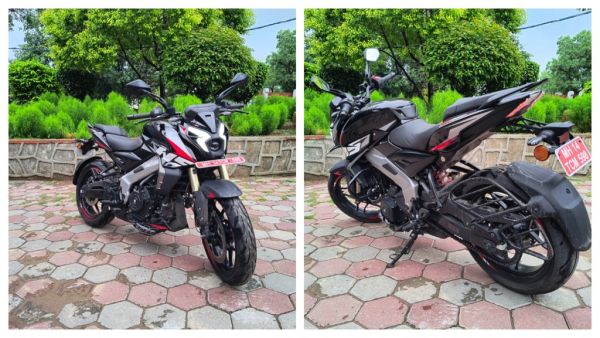
About 20 years ago, the Pulsar made you the coolest dude on the campus – it was powerful enough for the world to notice, light enough to handle, and affordable enough for your father. That power, that charisma, that affordability remains.What you also have today is range – the Pulsar is available in 11 variants, from 125 cc to 373 cc – and superbikelike performance (of the NS400z, launched last year). Now, this flagship has been upgraded, and we rode it.
What’s the upgrade?
Peak power has been increased from 40 PS to 43 PS; the 060 km/h acceleration time has dropped from 3.2 seconds to 2.7 seconds, and 0100 km/h from 7.5 seconds to just 6.4 seconds; top speed has gone up from 150 km/h to 157 km/h; it gets quickshifter (shifting gears without clutch); the rear tyre is wider – and for all this you need to pay Rs 7,328 extra.What hasn’t changed is design – lightning bolt DRLs, balllike headlamp, champagne gold USD (upsidedown) forks, and carbon fibre graphics.
How does it ride?
Oh, it’s stupendous! Let’s start with sound. It sounds like a calmer version of MotoGP bikes – the NS400z turns heads just by its exhaust note.Seating position is frontforward, footpegs slights set backwards, and the riding seat firmly accommodates your bottom.Shift into the first gear and open the throttle, and you will realise why it’s got a frontforward riding position – the bike is so fast that if you’re not sitting frontforward, the front wheel will lift off the ground.
Acceleration is intense especially in the midrange – in 2nd, 3rd, and 4th gears, you can go all the way from 30 km/h to almost 120 km/h in just 10 seconds.Even beyond that, the power delivery doesn’t taper, and our test unit easily touched 140 km/h, after which the rate of acceleration slowed.Claimed fuel efficiency is 28 km/litre (we didn’t have it for long enough to test true fuel efficiency).We rode it mostly in the rain, and the wider 150section Apollo Alpha H1 radial rear tyre felt grippy.It has the underbelly exhaust (doesn’t have a long exhaust pipe) and that seems to help with agility. While taking sharp turns, the bike felt more balanced – because the underbelly exhaust system is closer to the bike’s centre of gravity – and we could easily lean it into and out of corners.
What about pricing?
Some 20 years ago, the Pulsar had democratised highperformance sports motorcycling. The NS400z has done that, again. For Rs 1,92,328, exshowroom, it is by far the most affordable midsize sportbike in India. Compare that to Hero Mavrick (440 cc; Rs 1,99,500), Bajaj Dominar 400 (373 cc; Rs 2,38,682), Royal Enfield Guerrilla 450 (452 cc; Rs 2,39,000), HarleyDavidson X440 (440 cc; Rs 2,39,500), Triumph Speed 400 (398 cc; Rs 2,46,216), TVS Apache RTR 310 (312 cc; Rs 2,49,990), and KTM 390 Duke (399 cc; Rs 2,96,670), and you’ll realise that you don’t need to break the bank for a performance bike.One area where it doesn’t truly stand out is design – because it looks similar to some smaller Pulsars – and doesn’t seem to have the road presence of a Guerrilla 450 or a 390 Duke.